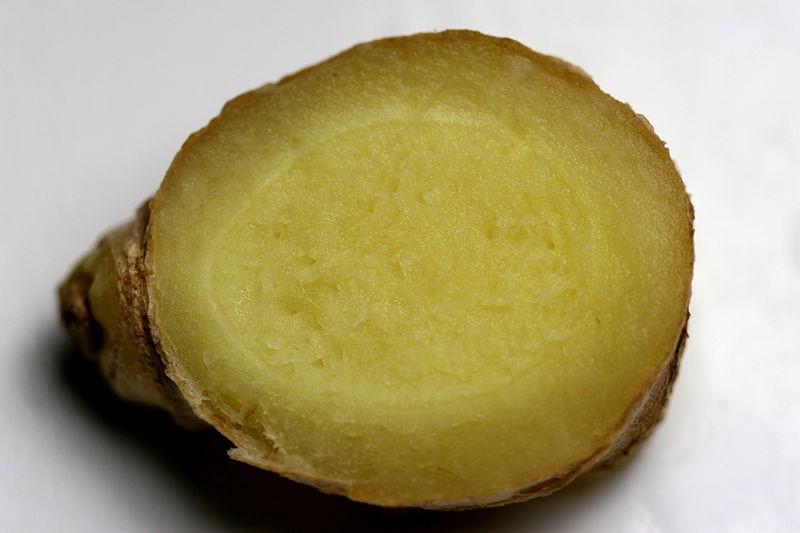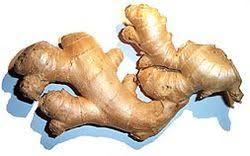Ginger
Common Names: Ginger
Scientific Name: Zingiber officinale
Climate: Temperate
Plant Description: It is a herbaceous perennial. It produces non-woody stems each year, reaching up to one meter in height. The long, green leaves grow directly from the stem. The flowers are white or yellow. They grow in spikes and only bloom for a few days. The most important part of the plant is the stem that grows under the ground.1
Cultivation: The easiest way to start growing ginger is to get some fresh rhizomes from someone who grows it the moment the plant sprouts again, which are planted five to ten centimeters deep.2
Ginger needs a lot of moisture while actively growing. The soil should never dry out completely. It does not withstand frost or strong winds, nor does it withstand direct sun.
If ginger is grown in the garden, you can start removing small pieces once it is about four months old. Nevertheless, the best time to collect ginger is any time after the leaves are fewer, which usually occurs after between eight and ten months. The concentration of essential oils increases as ginger ages and therefore the intended use of the rhizome should determine when it is harvested. If the main objective is to extract the oil, then the ginger can be harvested after nine months or more. Ginger harvested after eight months has a hard skin that must be removed before eating. It can be dried or ground into powder. Uses: Ginger possesses numerous therapeutic properties including antioxidant effects, and direct anti-inflammatory effects. Ginger is used in many ways, including fresh, dry, pickled, canned, crystallized, candied, and powdered or ground. The flavor is somewhat spicy and slightly sweet, with a strong and pungent aroma. It can be preserved in sweet vinegar, which gives it a pink color. It is used dry or powdered in ground ginger with desserts. Candied or crystallized ginger is cooked in sugar syrup and coated with granulated sugar. Young ginger rhizomes are tender with a mild flavor and are best used fresh or conserved.
Uses: Ginger possesses numerous therapeutic properties including antioxidant effects, and direct anti-inflammatory effects. Ginger is used in many ways, including fresh, dry, pickled, canned, crystallized, candied, and powdered or ground. The flavor is somewhat spicy and slightly sweet, with a strong and pungent aroma. It can be preserved in sweet vinegar, which gives it a pink color. It is used dry or powdered in ground ginger with desserts. Candied or crystallized ginger is cooked in sugar syrup and coated with granulated sugar. Young ginger rhizomes are tender with a mild flavor and are best used fresh or conserved.
Pests and Diseases: As it requires a lot of water, fungi can be a problem, but can be avoided by letting the soil dry out a little between waterings. Nematodes can attack roots, but intercropping of onion or garlic can reduce the chance of this happening. They can be treated with chamomile extract.3
References:
- https://biologia.laguia2000.com/botanica/el-jengibre
- http://www.tropicalpermaculture.com/growing-ginger.html
- https://www.ecovidasolar.es/blog/nematodos-remedios-naturales/
En español: Jengibre

